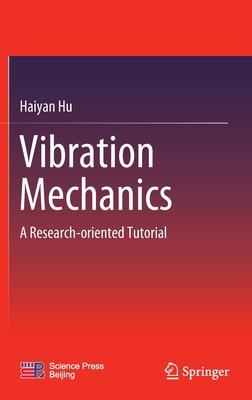You are here
Back to topVibration Mechanics: A Research-Oriented Tutorial (Hardcover)
$119.99
Usually Ships in 1-5 Days
Description
1 Start of Research-oriented Study 11.1 Needs for Research-oriented Study 11.2 Case Studies and Associated Problems 31.2.1 Preliminary study of a tethered satellite 41.2.2 Design of a hydro-elastic vibration isolation system 81.2.3 Two kinds of immovable points in a vibration system 111.2.4 Identical natural frequencies of different structures 151.2.5 Closely distributed natural modes of a symmetric structure 181.2.6 Transient response of a slender structure 211.3 Scope and Style of the Book 231.4 Further Reading and Thinking 252 Preparation of Research-oriented Study 272.1 Briefs of Beauty of Science 272.2 Beautiful Features of Vibration Mechanics 292.2.1 Unity 292.2.2 Simplicity 312.2.3 Regularity 342.2.4 Symmetry 372.2.5 Singularity 422.3 Enlightenments of Beauty of Vibration Mechanics 472.3.1 Methods of thinking 472.3.2 Aesthetic literacy 522.4 Concluding Remarks 542.5 Further Reading and Thinking 553 Models of Vibration Systems 573.1 Continuous Systems and Their Discrete Models 583.1.1 Dynamic models of continuous systems 583.1.2 Preconditions of discretization 663.1.3 Case studies of discretization 733.1.4 Concluding remarks 803.2 A Half Degree of Freedom of Discrete Systems 813.2.1 Degeneration of a degree of freedom 813.2.2 Conventional concept of degree of freedom 833.2.3 Degree of freedom based on accessible manifolds 863.2.4 Demonstrative systems with a non-holonomic constraint 903.2.5 Demonstrative systems with two non-holonomic constraints 973.2.6 Concluding remarks 1063.3 Structural Damping 1073.3.1 Frequency-invariant damping and its limitations 1083.3.2 Frequency-variant damping model and system response 1113.3.3 An approximate viscous damping model 1143.3.4 An approximate viscoelastic damping model 1163.3.5 Concluding remarks 1233.4 Further Reading and Thinking 1244 Vibration Analysis of Discrete Systems 1274.1 Vibration Systems with Non-holonomic Constraints 1284.1.1 Dynamic analysis in time domain 1284.1.2 Dynamic analysis in frequency domain 1414.1.3 Concluding remarks 1454.2 Node Number of a Natural Mode Shape 1464.2.1 Reexamination of current results 1484.2.2 Rules of node numbers of 2-DoF systems 1534.2.3 Design feasibility of nodes in a mode shape 1594.2.4 Concluding remarks 1624.3 Anti-resonances of a Harmonically Excited System 1634.3.1 Anti-resonances of 2-DoF systems 1644.3.2 Mechanisms behind two kinds of anti-resonances 1664.3.3 Design feasibility of anti-resonances 1714.3.4 Concluding remarks 1764.4 Dynamic Modifications of a System 1774.4.1 Frequency response of a composite system 1784.4.2 Adjusting an anti-resonance of a primary system 1814.4.3 Adjusting resonances of a primary system 1844.4.4 Concluding remarks 1924.5 Further Reading and Thinking 1935 Natural Vibrations of One-dimensional Structures 1955.1 Natural Vibrations of a Tether Pendulum 1955.1.1 Dynamic equation of a tether pendulum 1965.1.2 Analysis of natural vibrations 1995.1.3 Comparison between continuous model and discrete models 2075.1.4 Concluding remarks 2095.2 Duality Analysis of Rods in Natural Vibrations 2105.2.1 A dual of different cross-sections 2125.2.2 A dual of identical cross-sections 2185.2.3 A dual of two uniform rods 2235.2.4 A dual of two rod.
About the Author
Dr. Haiyan Hu is Professor of Mechanics at Beijing Institute of Technology, where he served as President from 2007 to 2017. Prior to that appointment, he was President of Nanjing University of Aeronautics and Astronautics, China from 2001 to 2007, Professor of Mechanics at that university from 1994 to 2007, and a Humboldt Research Fellow at University of Stuttgart, Germany from 1992 to 1994.Prof. Hu has made recognized contributions to the nonlinear dynamics and control of aerospace structures, including the stability and bifurcations of nonlinear vibration systems under delayed control, the active flutter suppression for aircraft structures, and the deployment dynamics of space structures in orbit. He has authored and co-authored 5 monographs/books and around 300 journal papers, which have been cited over 12,000 times. Prof. Hu received The State Award of Natural Science of China twice and many honors, such as Fellow of Chinese Academy of Sciences in 2007, Fellow of TWAS in 2010, and Honorary Doctor of Science from Moscow State University, Russia in 2015.
